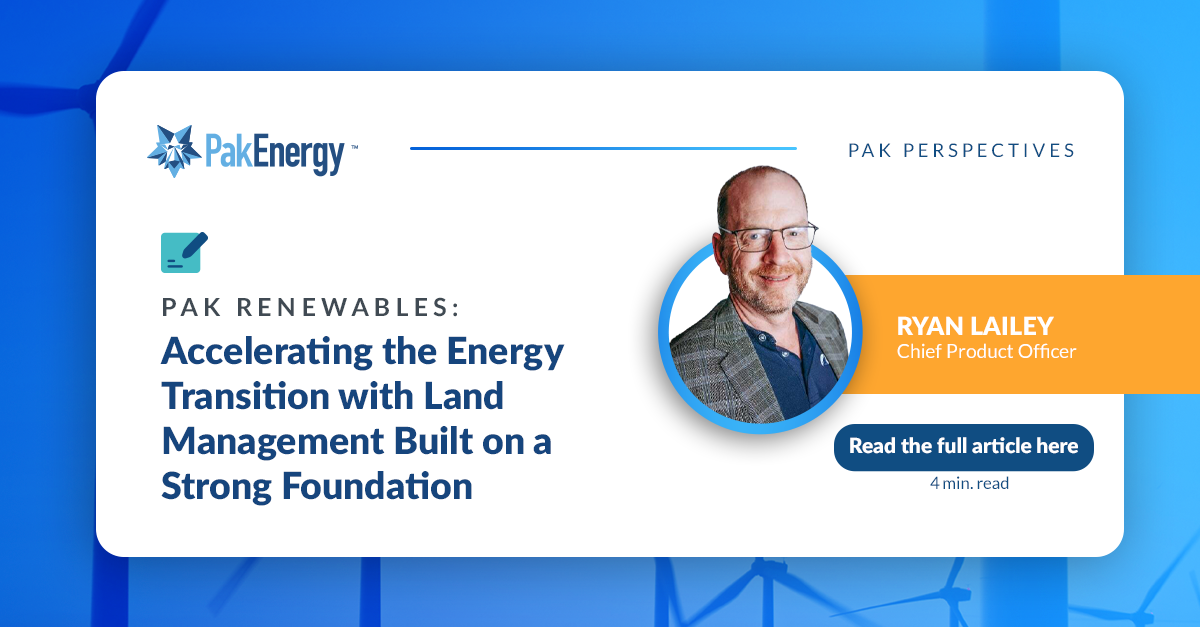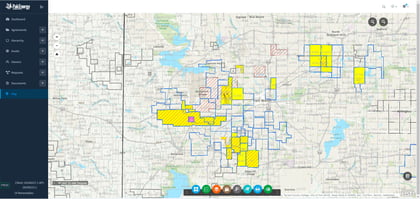
Renewable energy suddenly seems center stage. This is partially due to the energy transition where oil & gas companies are being called to stop drilling for oil and start planting windmills. It's a pretty selective transition as a trickle of hydrocarbon producers and future-minded startups add solar, wind, and geothermal power generation to their portfolios. At this rate, it would take decades for the oil & gas industry to really make a dent in the renewable energy needs of the country. So, where is the momentum coming from behind all the renewable energy projects in the development queue? And what is PakEnergy doing to accelerate the energy transition?

The Unstoppable Renewable Energy Trajectory
A surge in utility-scale renewable energy projects is being largely led by domestic and even international developers attracted by a confluence of fairly recent market forces. Long has the renewable energy industry and its advocates struggled with the federal government's commitment to provide long-term incentives that the industry has sought to go "all in" on solar and wind projects. In 2022's Inflation Reduction Act, they finally got that commitment in legislative writing. Another data point that shows the explosive growth of renewable energy, the US doubled its solar module manufacturing capacity in 2023 to 16 gigawatts according to the Solar Energy Industries Association. Combined with falling prices for photovoltaic modules and inverters, solar energy has even more tailwinds to propel its growth trajectory.

The Inflation Reduction Act included several additions that extended the Investor Tax Credit (ITC) to developers who build in specific so-called "energy communities." In a nutshell, these are areas that have certain economic links to the oil & gas industry, brownfield sites that the EPA has included in its RE-Powering America’s Land program, and areas of the US with historic links to coal power generation or coal mining. What all of this means is that developers aren't building in the most likely places, such as next to major power transmission hubs or urban centers. They are building where the ITC more than covers their cost of capital, which is still high as inflation lingers.
Energy communities put developers in the ballpark of where to build, but there is still complexity in siting projects based on local sun and weather patterns, grid congestion, and feasibility to build interconnects into transmission. Like a well, renewable projects have a lifecycle, starting with site selection and permitting through power purchase agreement contracts, construction, and operations. And just like in oil & gas, many project developers are building with monetization in mind from the start and seek to divest assets once put into operation.
For those left managing renewable assets in the long term, land management is the greatest challenge. Renewable asset management is similar to managing oil & gas assets in many ways, including tracking land use obligations, paying royalties, and managing daily interactions with landowners. But there are important differences and nuances that require purpose-built land solutions.
The Energy Transition Land Rush
Most people don’t realize that the McDonald’s Corporation generates most of its revenue not from burgers but from real estate it owns and on which franchise owners pay leases. In a similar way, clean energy companies may be in the business of generating megawatt hours, but they are also in the land business, although many teams may not have fully appreciated just how complex acquiring the acreage they need would be or recognize the long term challenges of managing those leases or easement agreements and the obligations involved.
Only the oil & gas industry has faced the large scale challenge of land management that renewable energy and carbon capture operators face. Because PakEnergy has developed category leading land management technologies for the oil & gas industry and continues to innovate, we are uniquely positioned to build on a time-tested foundation to tailor solutions that fit the unique needs of the energy transition.

We recognized that the land rush accompanying the energy transition would require specialized tools to help screen acreage, track agreement obligations, and manage projects at utility scale. But instead of rushing to publish a marketing web page with vague promises about helping clean energy like typical energy software shops have done, PakEnergy took stock of what is actually needed by starting conversations with the developers and asset operators facing challenges that no one had built a solution for - until now.
What Makes PakEnergy Renewables Different?
PakEnergy’s industry-recognized Pak Land platform, is relied on by the oil & gas industry to track complex leaseholds at scale and manage owner relations. It provides a proven technology foundation to build a tailored land solution designed for renewable energy. It delivers the same great user experience and powerful screens to bear on the similar, yet distinct challenges of renewables, where the focus is squarely on surface rights instead of minerals, owners are called participants, and production is measured in megawatt hours. So, what makes Pak Renewables stand out? Ease of use, reliability, and the flexibility to expand.
A throughline from start to finish, land management is the backbone of Pak Renewables that simplifies and accelerates project siting, lease/easement agreement acquisition, and daily operations. It creates immediate value for site selection by putting the IRA’s energy community data and 190,000 brownfields identified in EPA RE-Powering at your fingertips, helping developers quickly find the best ITC-eligible acreage backed by best-in-class technology from Esri. Leveraging these advanced web-based mapping tools, developers can easily map their projects alongside terrain features, environmental data, and grid topology, including transmission lines, substations, and interconnections. Easily bring in external data, CAD, and shape files to give your entire team the big picture of renewable energy projects in flight and in-service assets.
Automated Workflows Track & Manage Agreements & Obligations

Pak Renewables organizes all of your agreements and asset records securely on the cloud where teams can deploy 100 pre-built workflows to automate processes. The legal description for land, key agreement provisions, and division of interest are captured for each project, empowering users to easily track and monitor obligations and expirations by exception with an eCalendar. Pak Renewables provides end-to-end project tracking as well, enabling teams to manage documents and data across the project lifecycle.
Like other PakEnergy products, Pak Renewables boasts a robust API enabling it to exchange data with other systems, including GIS and external data providers. And last but not least, Pak Renewables provides a complete customer relationship management system (CRM) to track royalty participant contact information and interactions (e.g., change of ownership requests).
Robust GIS Tools Create & Map Projects in Minutes

Renewable energy is just part of a broader sustainability category of underserved workflows, including carbon capture, utilization, and storage (CCUS) and clean hydrogen transmission. Here, land use, agreements, and managing landowner relations are equally important as solar, wind, and geothermal land management. And PakEnergy is there at every stage with purpose-built asset management and business automation solutions as sustainability and renewable energy evolve, bringing a new level of operational and cost efficiency to these crucial markets just as we have for the oil & gas industry.
Want to learn more about simplifying project, land, obligations, and asset management with Pak Renewables? Download our “5 Strategies to Improve Renewable Energy Land Acquisition, Project Execution & Asset Management” eBook now!

Ryan Lailey is the Chief Product Officer of PakEnergy, responsible for product leadership, continued innovation, and ongoing strategy. With over 20 years of finance and technology experience, Ryan’s career has touched every aspect of corporate operations giving him a unique perspective on the importance of digital solutions to optimize performance and increase valuation. Ryan joined PakEnergy in 2019 during the acquisition of DocVue, where he served as Chief Technology Officer and Chief Operating Officer. Before DocVue, Ryan was a founding member of Cortex Business Solutions and served in leadership roles in multiple areas of the organization including business development, marketing, investor relations, and corporate strategy. Previously, Ryan served as a senior financial executive at ScotiaMcLeod, a premier investment advisory firm in Canada.
